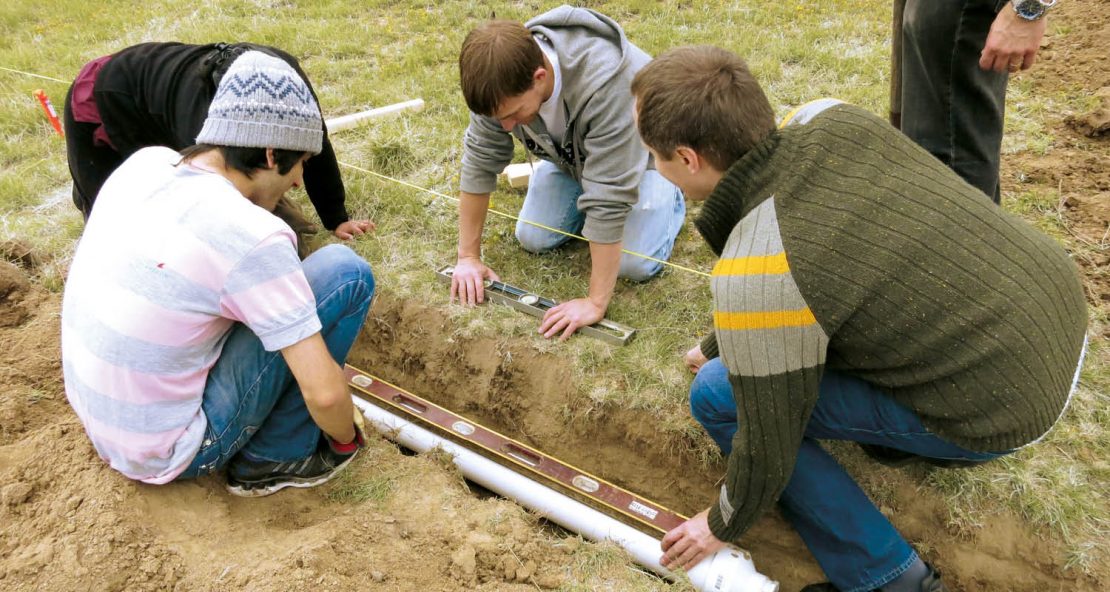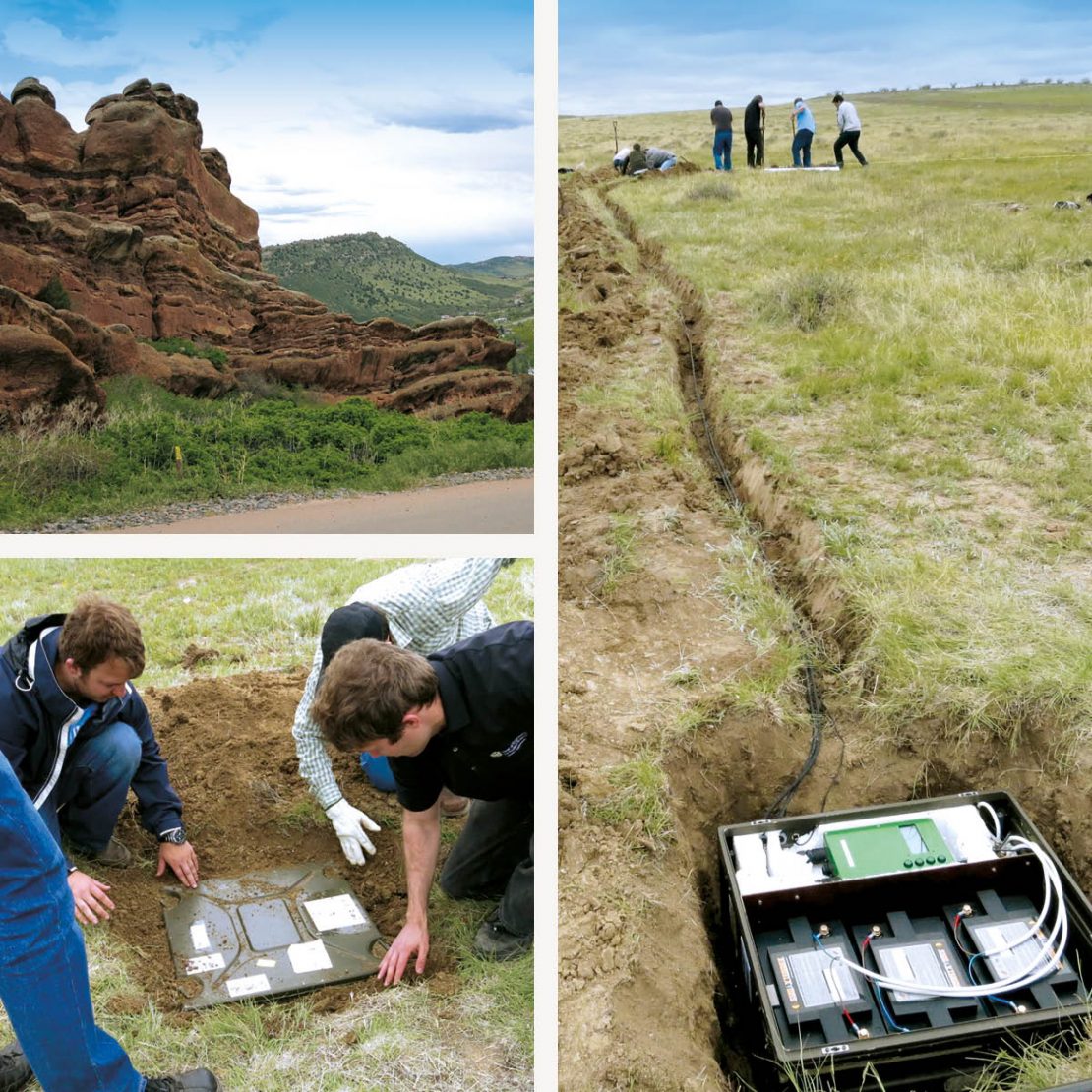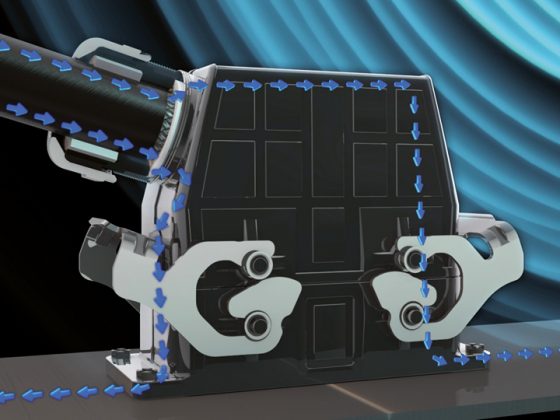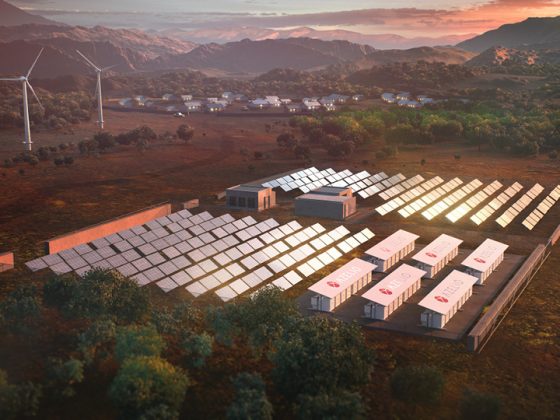
Everyone knows them from the car radio: frequency-modulated ultrashort waves (FM) . However, there are even lower frequencies – electromagnetic waves can also be generated, transmitted and received below these radio frequencies. Depending on the frequency, the experts refer to Very, Ultra, Super or Extremely Low Frequencies (ELF). The latter denotes the range below 30 hertz. These ELF waves have an immense range and can even run around the Earth several times. This is due to their very large wavelengths. The wavelength of a signal at 7.8 hertz is equal to the circumference of the Earth. With the propagation of these ELF signals, the Earth’s surface and the ionosphere, a layer of electrically charged particles in the atmosphere, form a kind of tunnel through which these waves move. This benefits scientists who investigate the Earth’s atmosphere and the nature of lightning. This is because thunderbolts generate short ELF pulses that can be detected with appropriate antennae.

The interdisciplinary WERA project was initiated by the Astronomical Observatory at the Jagiellonen University and the Faculty of Electronics at the AGH University of Science and Technology in Krakow, Poland. Both research institutes have been working on the project for almost 20 years. It primarily serves to monitor and portray global storm activity that varies over time. This enables geophysical, climatic and meteorological analyses on earth. The researchers around the world measure and classify electrical discharges in the atmosphere. The Polish scientists are also supporting researchers who investigate the influence of solar eruptions and X-rays from space.
WERA is also involved in the research of electromagnetic interference at the gravitational wave detectors LIGO in the USA and VIRO in Italy. They have confirmed the existence of gravitational waves. To locate all these phenomena as accurately as possible, several measuring stations need to work together. WERA consists of three such stations: in Rio Gallegos (Argentina), in the Bieszczady mountains (Poland) and in Colorado (USA). These are located in sparsely populated areas, far from technical facilities. This is done to prevent external signals from disrupting the sensitive antennae.


Of course, the stations have to operate as autonomously and reliably as possible. After all, it’s time-consuming and expensive to repair failures. That is why the initiators of WERA rely exclusively on components of the highest quality, such as cables from LAPP. The reception module of the station in Argentina, for example, is wired with UNITRONIC® LiYCY and UNITRONIC® LiFYCY (TP) cables. Both cables are designed for low-frequency data transmission in systems where space is tight. Thanks to extra-fine strands and the fact that they’re twisted in pairs (TP variant), they’re particularly thin and flexible. When it’s permanently installed, the UNITRONIC® LiFYCY (TP) allows a tight bending radius of just four times the outer diameter. Nevertheless, the cables can withstand temperatures as low as -40 °C when they’re permanently installed. A further advantage is the excellent shielding. The pair stranding in the TP variant also reduces the potential for signal crosstalk between the circuits.

The ÖLFLEX® Robust 215C control cable, which connects the electronics and the antennae in the station in Argentina, is also extremely robust and perfectly shielded. This is important for its function, as the cable can’t act as an antenna itself and can’t receive or send electromagnetic signals. The cable is weatherproof, ozone-resistant and UV-resistant and, when it’s permanently installed, suitable for a wide temperature range from -50 °C to +80 °C. For outdoor cables, the point where the cable is inserted into a housing is always critical. The housing must be tight and the cable should be strain-relieved. To do this, the researchers rely on the SKINTOP® MS-M cable gland from LAPP. It’s cold-resistant down to -40 °C, has a double lamella basket and holds cables up to 98 mm diameter completely secure and firmly. It is also approved in accordance with IP69 and even remains impermeable when treated with a high-pressure cleaner.
Even today, lightning is one of the most fascinating but largely unexplored natural phenomena. Reliable solutions from LAPP create the perfect connection in the reception modules of the WERA stations so that it can be researched.



